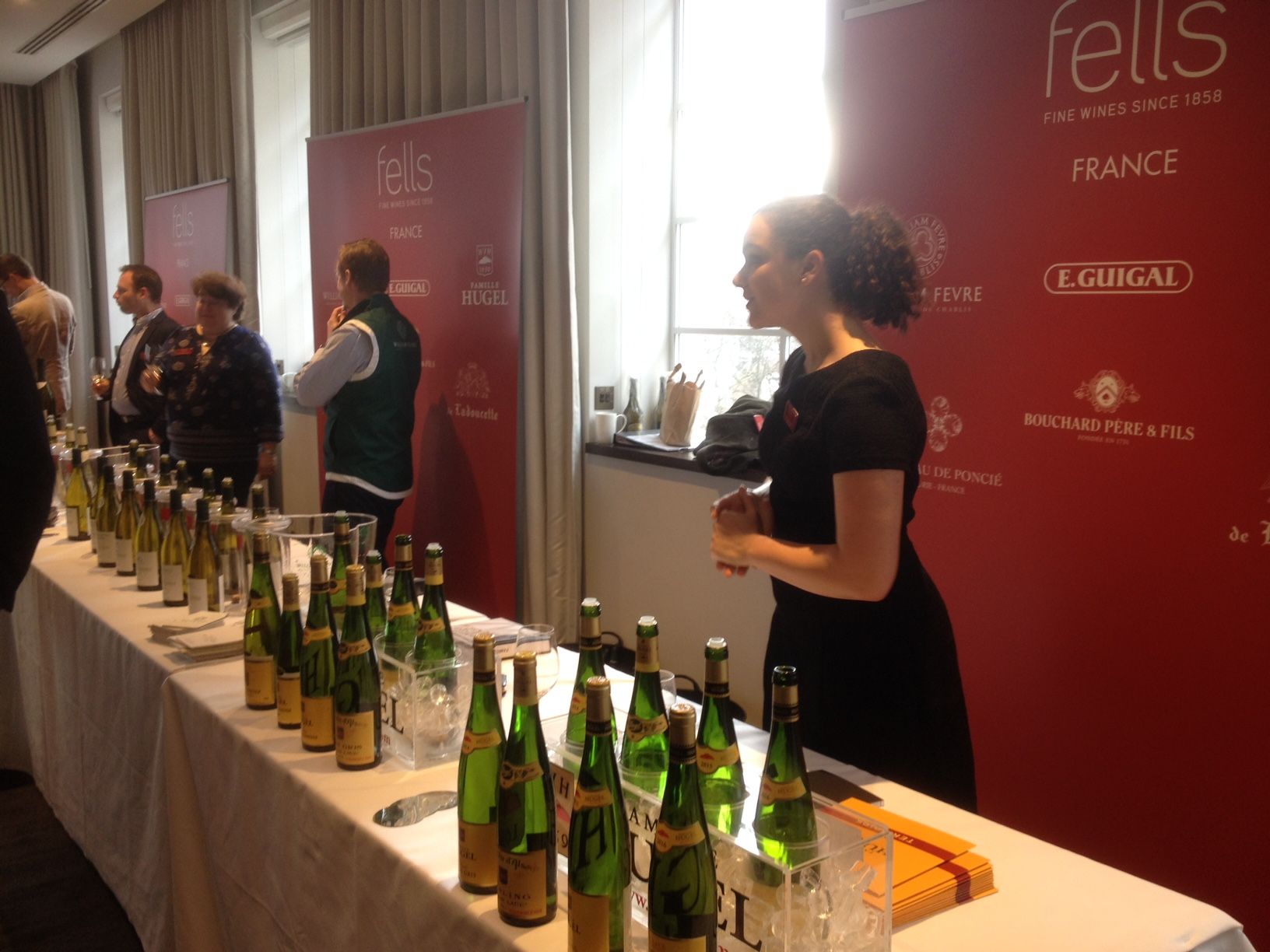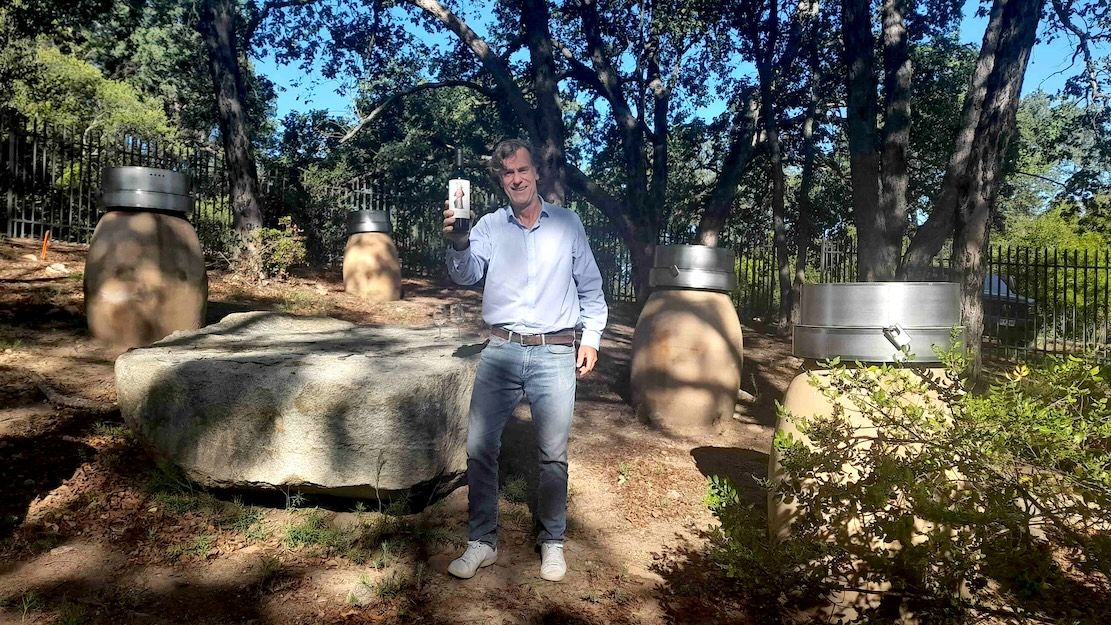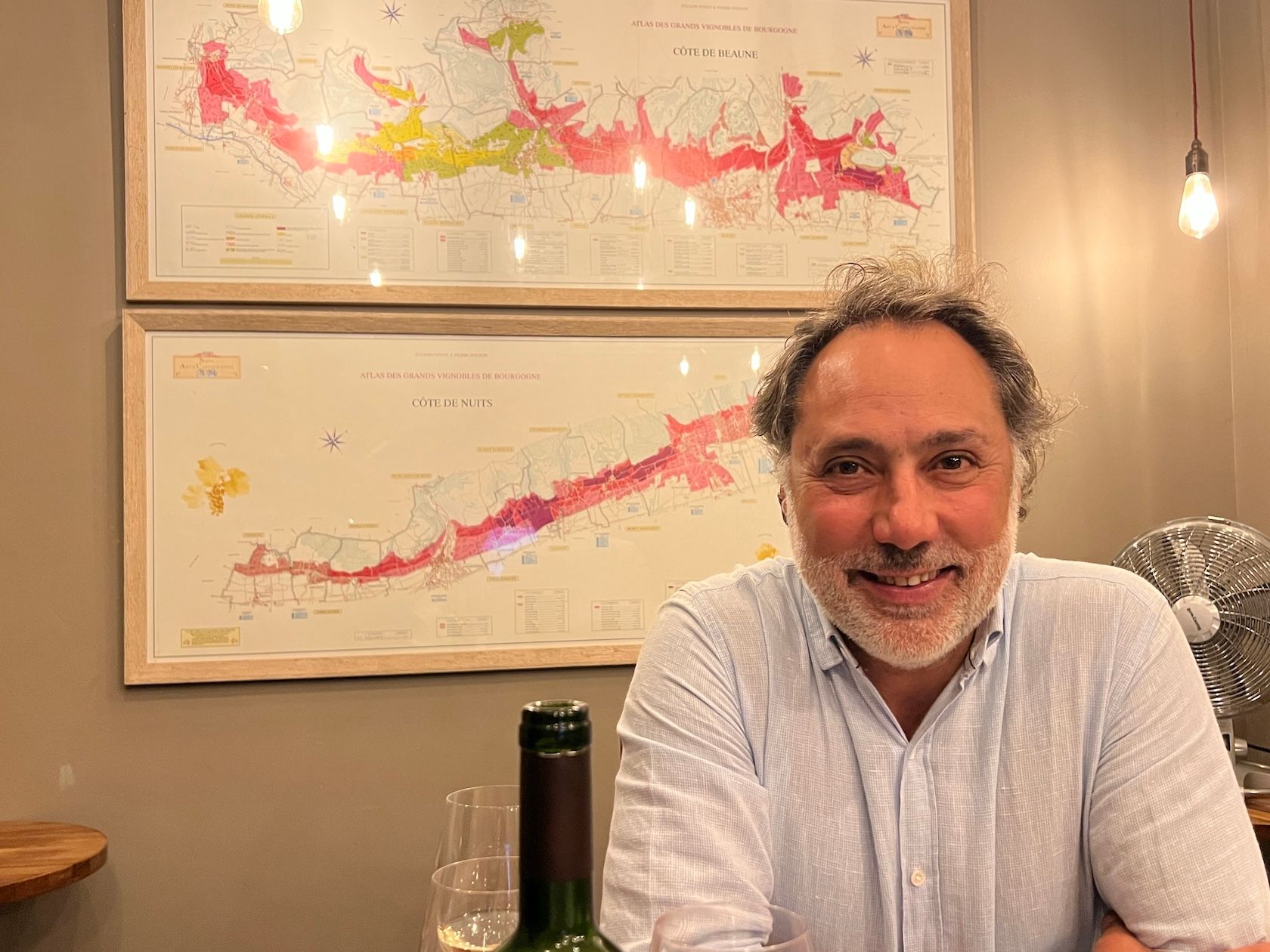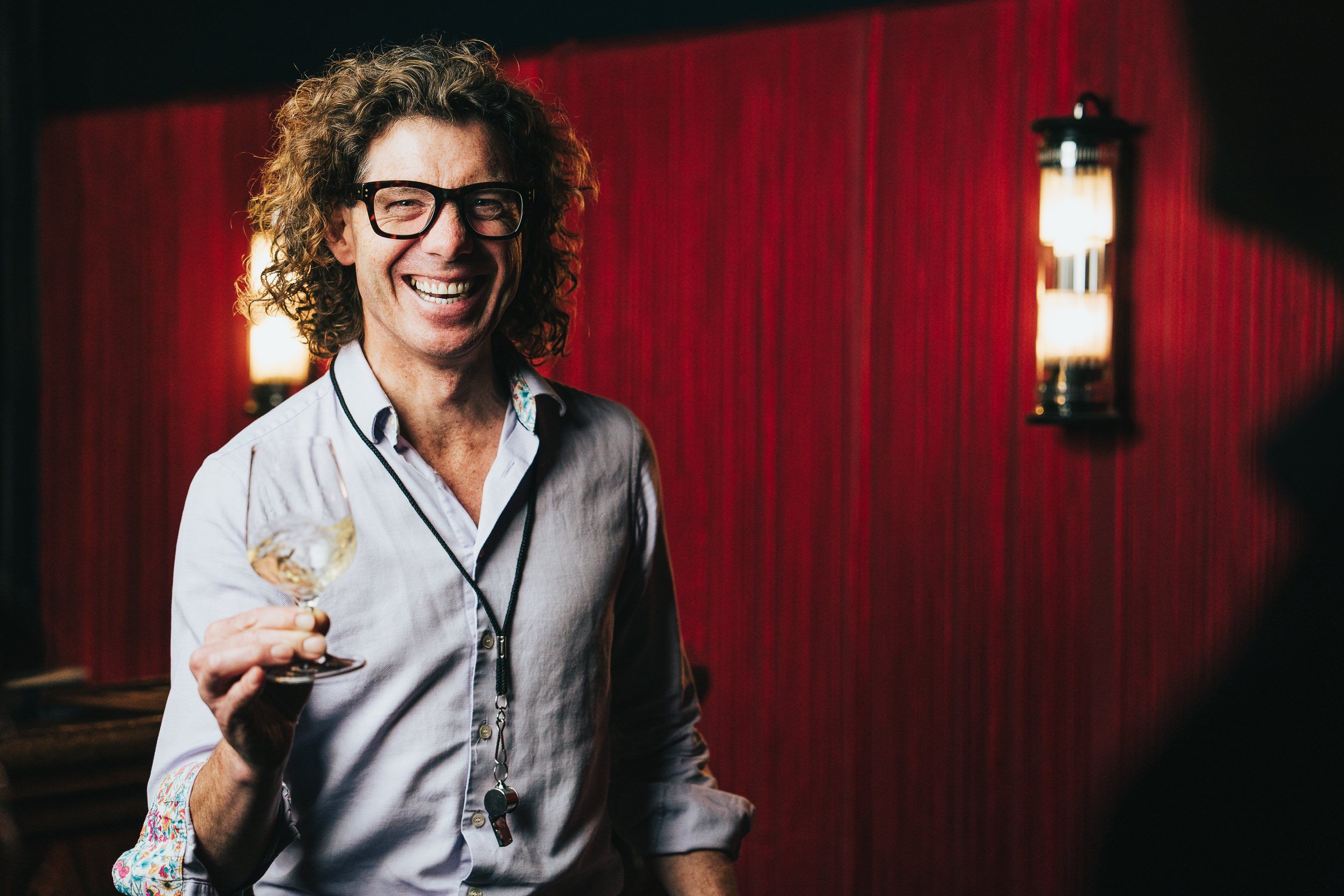Despite tempting his taste buds with an £8,000 bottle of wine, Keay picks out many of the much cheaper bottles as smart buys from Fells.
A wise man once told me the place he would most like to be at the hour of his death is Peter Jones, in Sloane Square, “because he really couldn’t imagine anything awful happening there.”
I recalled this exchange as I was making my way around this year’s Fells Annual Portfolio tasting.
Held in the glamorous IET Savoy Place, with its stunning views of the Thames and Waterloo Bridge, this, I told myself, is the Peter Jones of the wine tasting world.
A central location with lots of space? Check. Nibbles served? Check. Well-dressed and spoken people, some wearing sports jackets and blazers, all genuinely interested in what they were tasting? A groaning Fine Wine table showing some fantastic old vintages and also some surprises (including a remarkable £8000 bottle of Versos 1891 Amontillado and an equally impressive £1000 bottle of Reliquia Palo Cortado, both from Barbadillo and some wonderful old Madeiras dating back to when I was still in short pants)? Check and double check.

Why aren’t more tasting like this? I wondered.
The Peter Jones analogy extends very much to the producers in the Fells portfolio. Like the company’s owners, Symington Family Estates, most are solid, family-owned and prioritise quality and tradition: Torres, Hugel, Tedeschi, Tyrells, Brown Brothers, Wente and Jackson Family Estates reassure because they make damn good wines and also because they seem to have been around forever – reliable and familiar household names whose wines should form part of everybody’s cellar.
This tasting really should have started with Symington Family Estates and, in particular, its increasingly impressive Douro wines, including the flagship Quinta do Vesuvio. But it wasn’t to be: my invite to the (by all accounts excellent) Masterclass given by SFE head Paul Symington never arrived. So this would be Fells without Symington, a shame – perverse almost – but in the end actually no hardship.
Famille Hugel, manned (if that is the word) by Charlotte Hugel had a wonderful range of the Riesling, Pinot Gris and Gewürztraminer that have rightly made this producer one of the most famous in Alsace.
The delicious Gewuürztraminer Sélection de Grains Nobles S 2007 (£161) has amazing depth but still feels like a relative baby: Charlotte says that in five years it will be reaching its full potential. Perhaps. Until then, though, I recommend their entry level Alsace blend bottle-aged Gentil 2016 (a bargain at £15), wonderfully fresh with marzipan and hazelnut notes atop the lush exotic fruit; the equally good value Pinot Gris Classic 2014 (£19.49) and, for those with deeper pockets, the Pinot Gris Grossi Loue 2010 (£47.49) – wonderfully rich and sensuous though checking in at a startling 15.5% alcohol.
Further evidence that Pinot Gris really is the Hugel grape came with tasting the 1976 Sélection de Grains Nobles: amazingly rich and nuanced, this felt like it was made ten rather than 40 years ago.
E.Guigal has long been one of my favourite Rhône producers and it didn’t disappoint. As you might expect from the producer that helped revive the once nearly moribund Viognier grape, its Condrieu 2015 – one third new oak barrel fermented and two thirds stainless steel – was delicious, lots of fruit on the palate but with some decent acidity to support it (£48.49). Almost as impressive was the Saint-Joseph Lieu Dit 2016, a blend of 95% Marsanne and 5% Roussanne (£39.49); tasting the wonderfully evolved 2012 alongside it made me realise this is a wine with serious age potential.
But the stand-out was the Cotes De Rhône Blanc 2016, a bargain at just £13.49; made with 60% Viognier alongside a blend of the other Rhône white varietals, this is fresh but also remarkably complex and one of the best value wines of the tasting.
Value isn’t what you normally expect from Tedeschi, whom I know for its world-class Amarone (the producer is one of the original families of Amarone), even though it typically accounts for only one fifth of its annual production of 500,000 bottles. The two Amarones here – the standard Amarone della Valpolicella 2013 (£39) and the much better and pricier Capital Monte Olmi Amarone Classico Riserva 2011 (£76.50) – were everything you might expect: full-bodied, dark currant fruit and with the Riserva, an amazingly long finish.
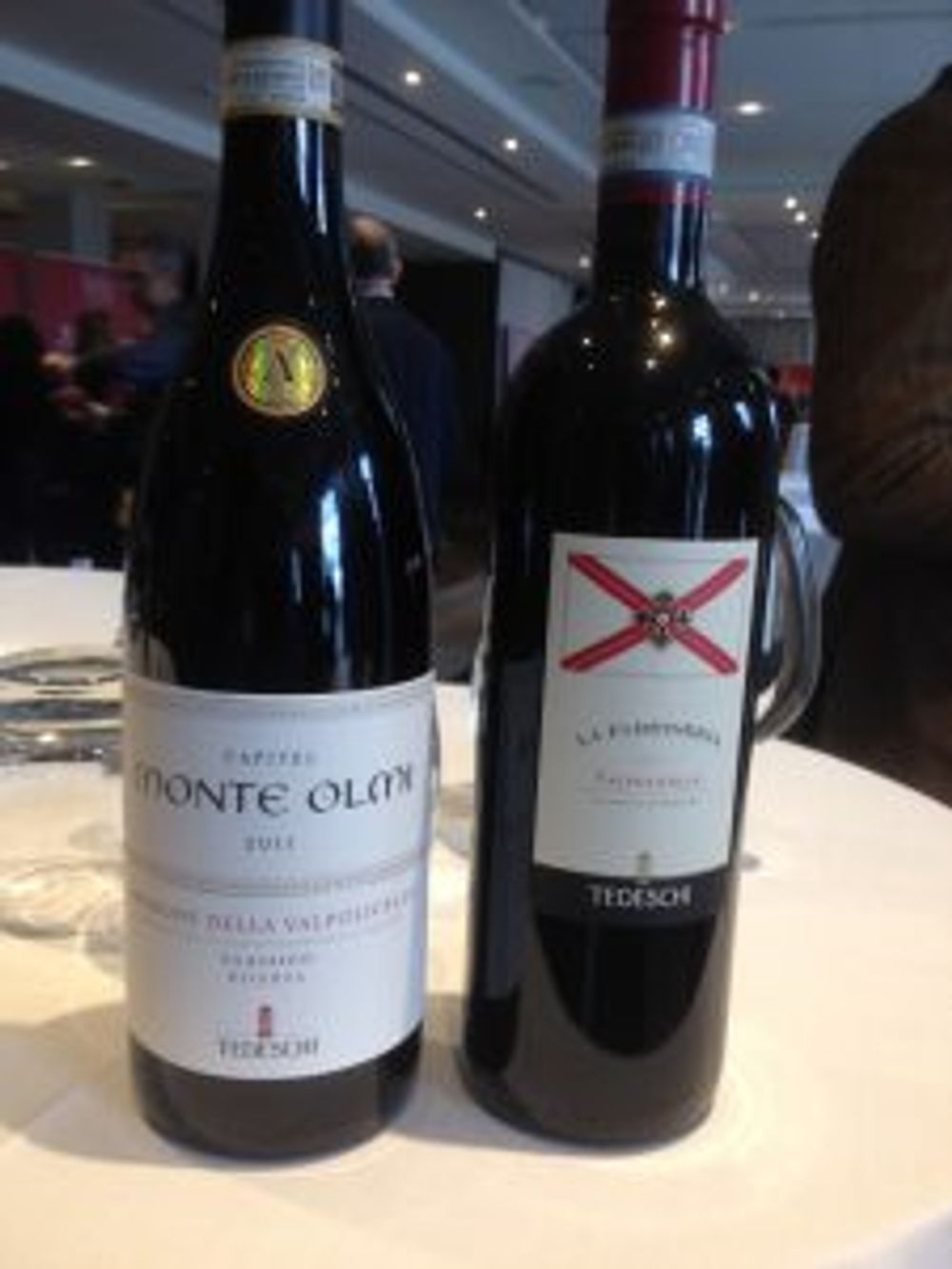
But the discovery was La Fabriseria Valpolicella 2011, amazingly concentrated with wonderful fresh berry fruit, this unofficial baby Amarone is very good value at £31.50.
A visit to the new state-of-the-art Familia Torres winery in Penedes a few weeks ago left me in no doubt that this is quite possibly Spain’s best producer, for both the quality and sheer diversity of the wines.
A tour and a tasting of wines from their main vineyard sites in Catalonia (including their fabulous Priorat, Perpetual), Ribeira del Duero, Rioja and now also Rias Baixas showed Torres is so much more than Sol, Esmerelda and Sangre del Toro, good though these entry level wines are. The stand-outs for me at Fells though were the family’s first Penedes sparkling wine, the ambitious and moreish Cuvee Esplendor 2013 by Vardon Kennett, made with 55% Pinot Noir, 40% Chardonnay and 5% Xarel-lo (so not a Cava). Priced at £37 I’m guessing this will only have niche appeal but hey, I liked it and its existence confirmed the family’s determination to keep pushing the envelope.
Torres was showing its showpiece wine, the 100% Cabernet Sauvignon Mas La Plana in two great vintages, 2006 and 2013, both of which demonstrated great richness and depth. But one of my Torres favorites is the Conca de Barbera blend Grans Murrales and the 2010 on show in the fine wine section was a revelation; made in stony soil near Tarragona, and using near extinct varieties alongside Garnacha and Monastrell, this is amazingly nuanced, with a finish that goes on and on.
It may be hard to recall this but there was a time when South Australia’s Torbreck was once known as one of those rather bog standard producers, making pretty good but hardly outstanding wines. That was then.
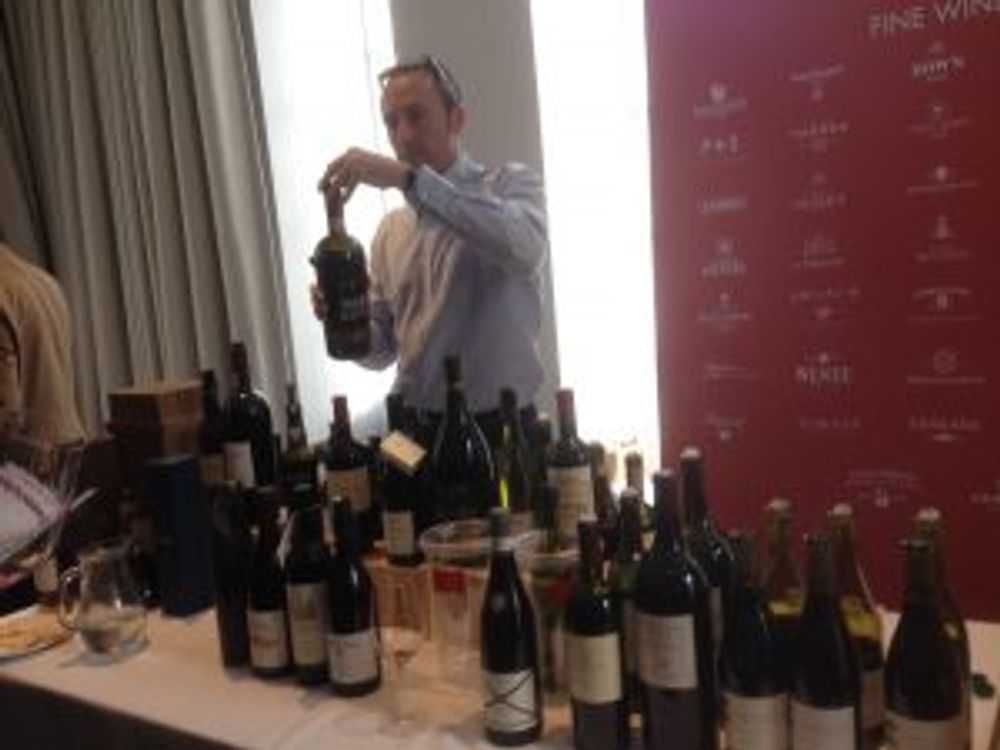
Export sales manager, Andrew Tierney, says the focus now is all on quality which is why only 95,000 bottles are produced in a typical vintage. Wines to look out for include the white Rhône blend Steading Blanc 2015 (£37), The Struie 2014 (a Shiraz made with blended fruit from Barossa and Eden Valleys, £48.50) and Factor 2007 (£124) an amazingly saline but full-bodied and deeply nuanced Shiraz; the extraordinary taste reflects the lack of water (2007 was a major drought year in South Australia). Those with (very) deep pockets could also consider springing for the huge (15.5%) flagship wine Runrig 2014; in a few years time, this will hopefully justify its £184 price tag.
I’m not the world’s biggest fan of Champagne, but I know quality when I taste it and Champagne Henriot‘s wines has this in buckets (or barrels) especially the Brut Rose NV (£58.50) made with Pinot Noir vinified as a red, Chardonnay and Pinot Meunier, and kept in cellar for three years before release; and the extraordinary Enchanteleurs Eclipse (£330 for 150cl) made with grapes selected from six of the most prestigious Grand Crus in Champagne.
Delicious – like something my wise old friend would chose to drink in Peter Jones.
